Reading Time: mins
The Sun doesn’t just give off light. It also emits charged particles, which travel from the Sun, by the solar wind, towards the planets. The magnetic fields around the planets protect them from the charged particles most of the time. However, if the Sun has a type of solar storm, called a coronal mass ejection, a huge amount of the charged particles are sent out into space. These can then interact with the magnetic fields around the planets and travel down the magnetic field lines around the north and south pole into the planet’s atmosphere. The particles then interact with gases in the atmosphere. The results are beautiful colourful displays of moving lights. Different elements in the atmosphere result in different colours in the aurora. Here on Earth, we often see green and red aurora, resulting from interactions with oxygen. Other colours we observe on Earth in the aurora are blue and purple from nitrogen.
Image 1: Aurora on Earth, view from the ISS. Source: NASA
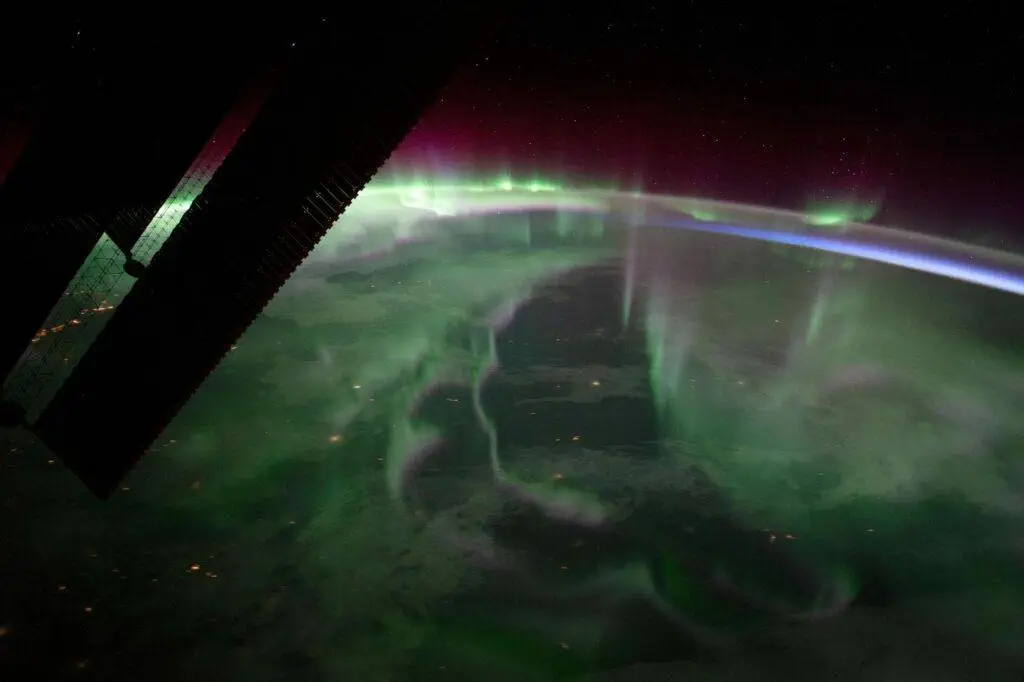
Now let’s travel to some of other planets where we have photographed aurora and see what colours we can find.
Aurora on Venus are different from on Earth and the other planets. This is because Venus doesn’t have a protective magnetic field so the Aurora are not confined to the magnetic poles. They can appear anywhere over the whole of the planet. However, Venus is covered with dense haze, so if you were on the surface you wouldn’t be able to see them at all, only from space!
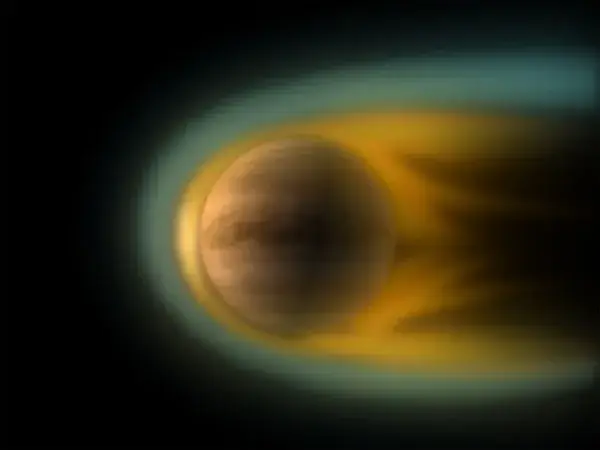
In December 2014, NASA’s MAVEN spacecraft discovered an aurora spread over much of the northern hemisphere of Mars. They nicknamed them “Christmas Lights”. These aurora covered so much of Mars that if they were on Earth, the aurora would have been over places like Florida and Texas.
The magnetic field on Mars is very different to here on Earth, instead of covering the whole planet it has umbrella-shaped magnetic fields coming out of the earth at various places. They are left from a global magnetic field which has decayed over billions of years.
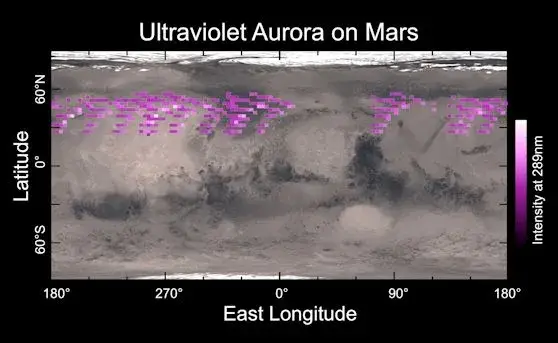
Jupiter has the most spectacular aurora in the Solar System. This is due to its incredibly intense magnetic field 20,000 times stronger than the Earth’s magnetic field. Interestingly, the Aurora on Jupiter are not just caused by charged particles from the Sun, but also from its volcano moon, Io. The magnetosphere around Jupiter accelerates the charged particles deep into the atmosphere. Where they collide with particles such as hydrogen to create the huge Aurora on Jupiter, which appear reddish in colour.
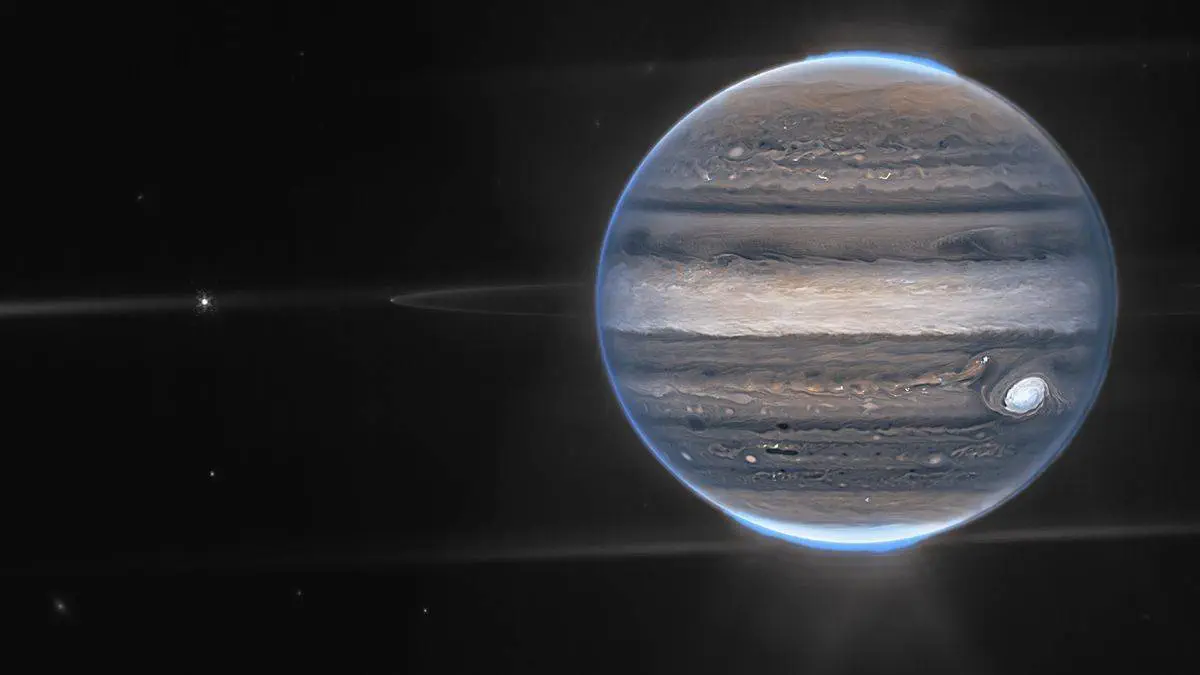
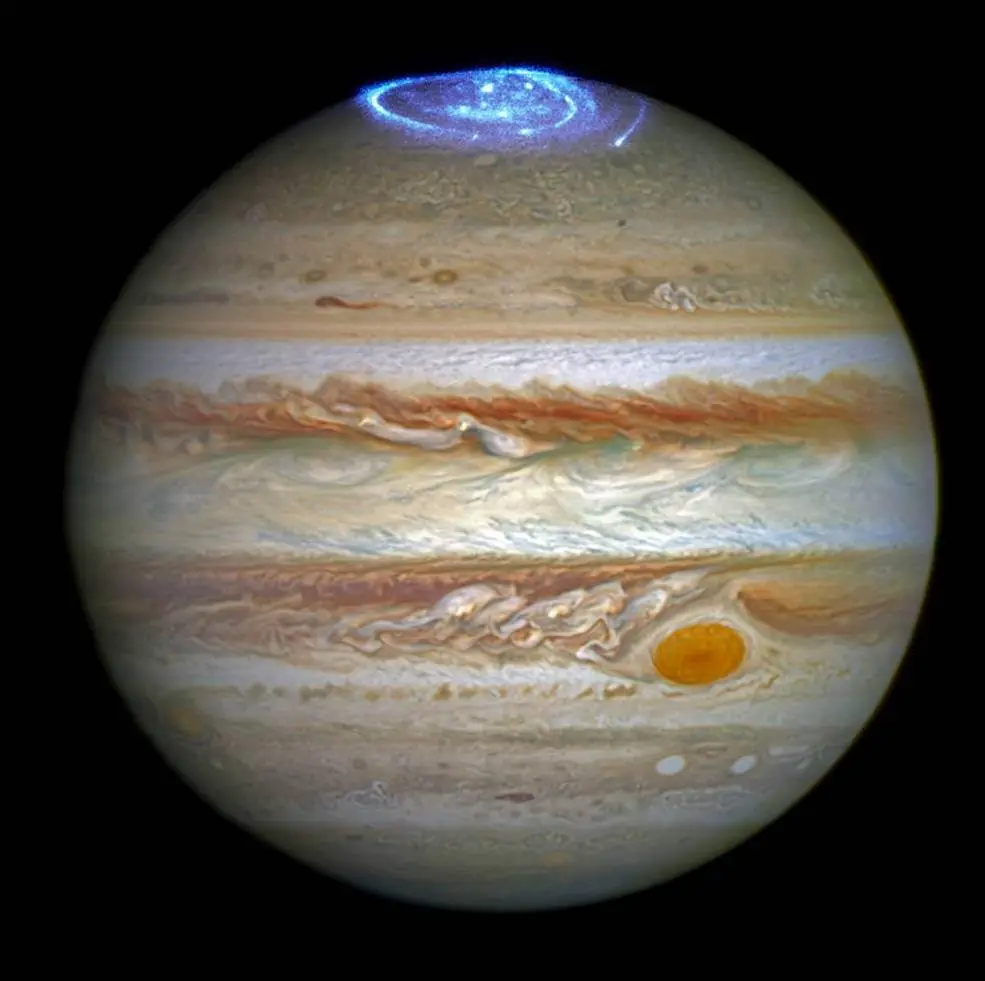
Similar to Earth, the Aurora on Saturn are mainly over the polar regions. Which are created by the solar wind, like on Earth, as well as magnetosphere-driven similar to Jupiter. Saturn’s atmosphere, like the other gas giants, is dominated by hydrogen, so the aurora is primarily emitted in ultraviolet light.
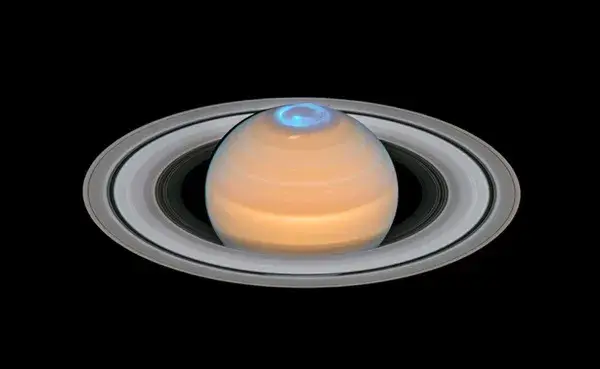
The magnetic poles on Uranus do not align with the geographical ones, and thus the axis of spin. Thus, the aurora doesn’t appear over the polar regions, and can extend as far as the equator. The reason for the misalignment is not clear, but scientists hope that studying the aurora might help solve this question. Similar to Saturn, Uranus’ atmosphere is mainly a mix of hydrogen and helium, which mainly emit aurora in ultraviolet and infrared wavelengths.
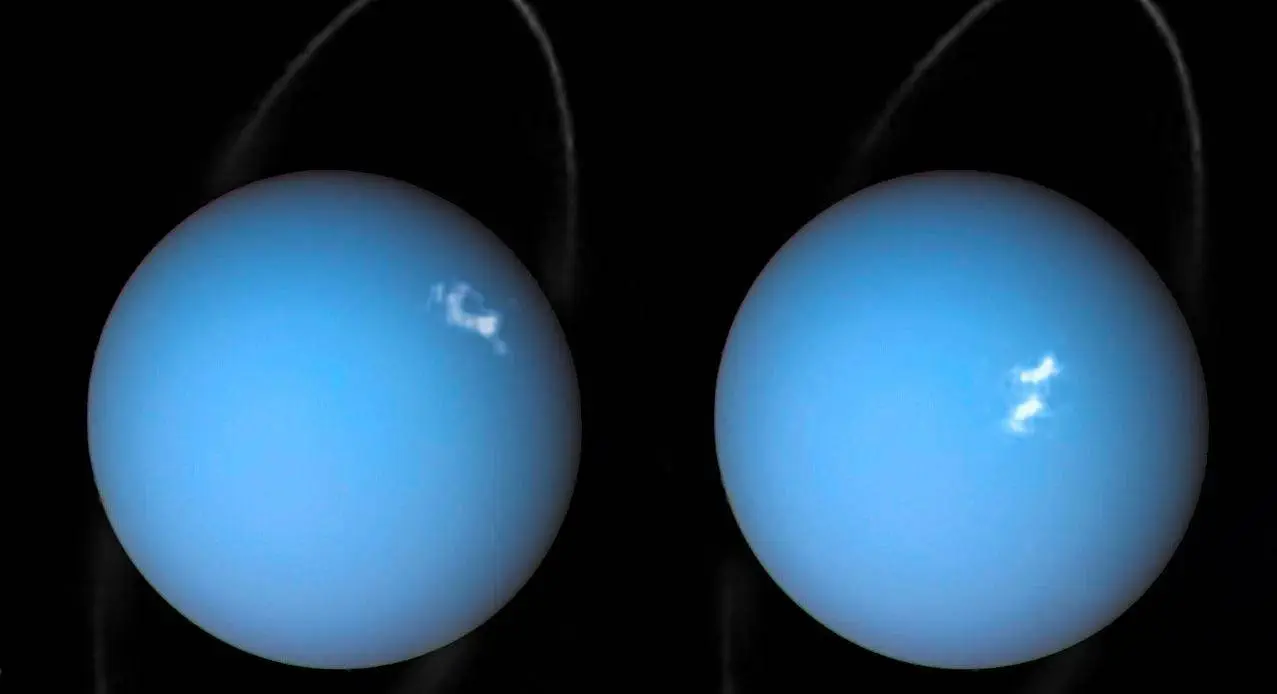
The aurora on Neptune are similar to those on Earth. However, they are quite weak since Neptune’s rings sweep away many of the charged particles from the Sun. Thus, there are less charged particles to interact with the magnetic field and create the aurora.
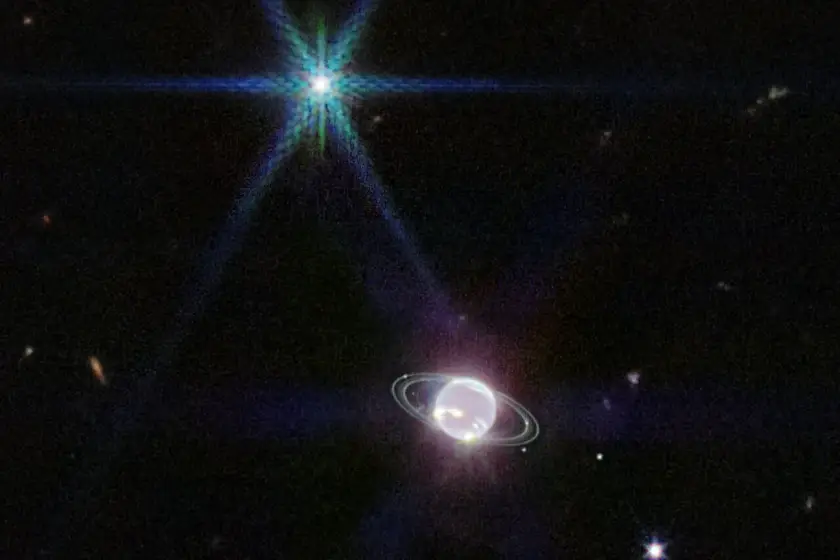
Most planets in our Solar System have aurora due to charged particles from the Sun interacting with their atmosphere. Their magnetic fields protect them from much of the solar radiation and restrict the area where the aurora are created. Different elements in the planet’s atmosphere cause different colour aurora, all of which are beautiful in different ways!
This post was written by Dr Heather Campbell for Mission Astro.
If you have any questions about this post or our services, please email us on [email protected].
Take me to the FREE taster session for Mission Astro!
Copyright © 2025 Just Good Science Ltd
Website and course built and managed by Web X Design Studio